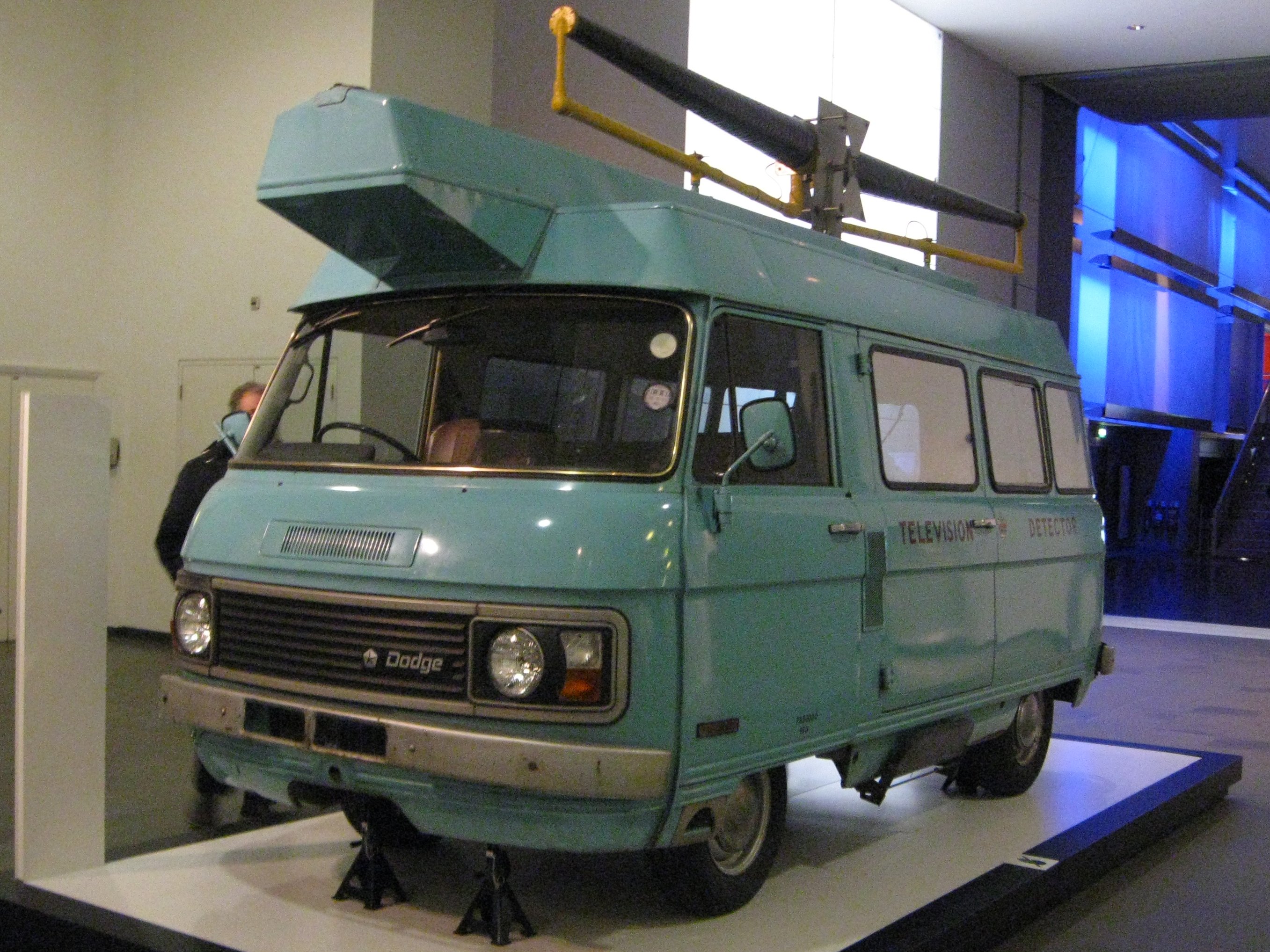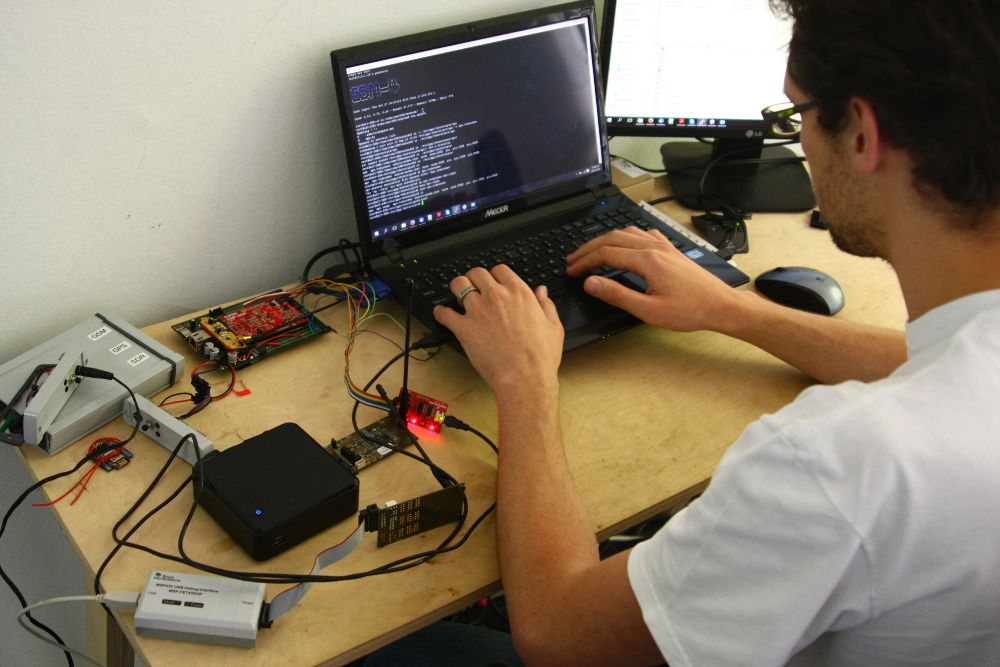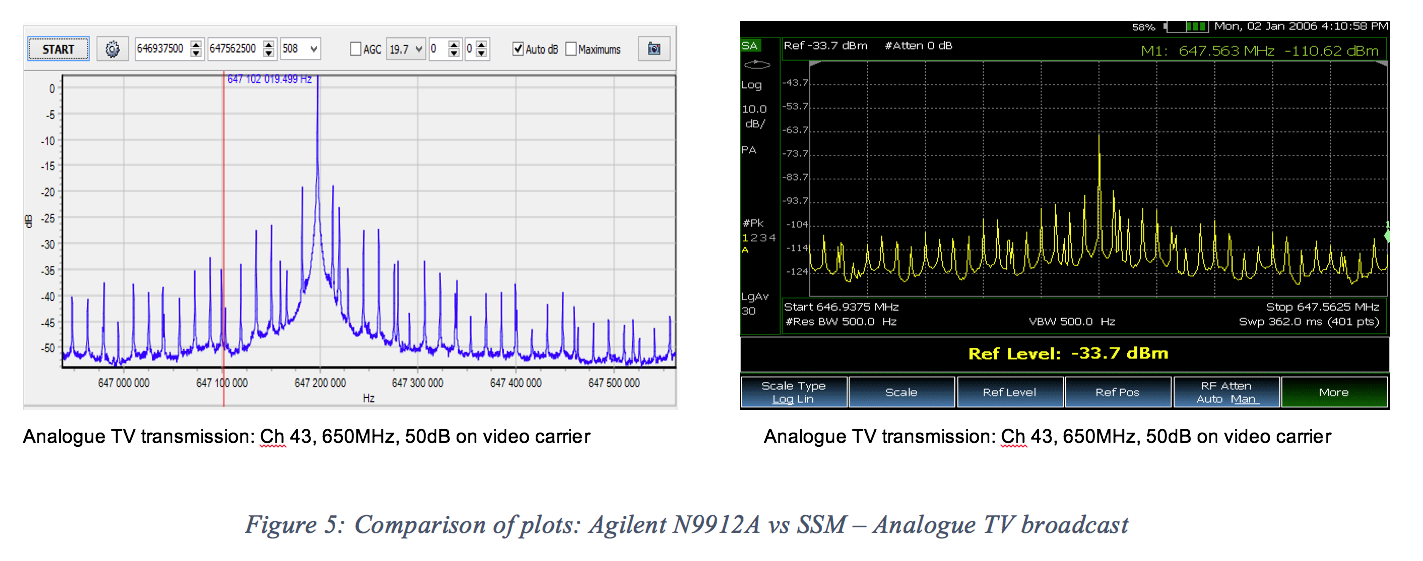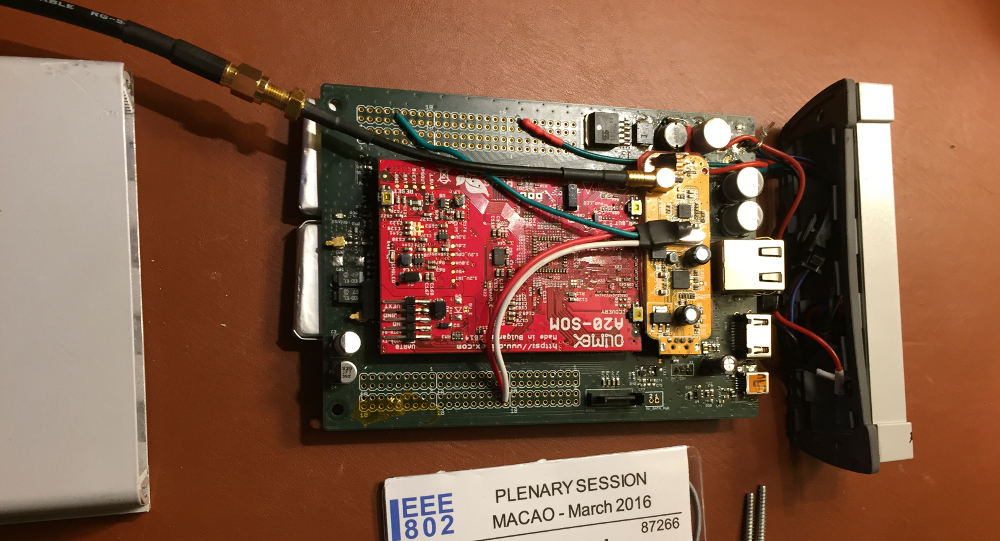Back when I was growing up in the UK during the 1970s and 80s, there was one sight which was sure to strike fear into the heart of the most law-abiding Dr Who fan.
Scarier than either the Cybermen or the Daleks, it was the dreaded TV Detector Van. These ominous vehicles, owned and managed by the British Broadcasting Corporation (BBC), would cruise residential areas allegedly looking for a tell-tale radio signal which indicated a household was watching TV without paying for their licence.
[su_pullquote]“Deploying a nationwide network of sensors which could reveal the whereabouts of military units on exercise or deployment probably wouldn’t go down well.”[/su_pullquote]Their coming was presaged in doom-laden adverts on BBC channel. Clips showed licence-dodging perps receiving a visit from pencil moustached G-men, followed by a turn before a judge.
The vans looked a bit like today’s autonomous cars, a surreal mashup between a VW Combi and a crashed satellite. But many argue that the TV Detector Van was a comically elaborate hoax designed to terrify citizens into complying with the law on licences. Although they were in service for many years, no evidence gathered by a TV Detector Van was ever presented in a court, leading experts to assume that the detectors were fake and the human inspectors inside were simply knocking on the door of any house not listed as owning a TV licence and having a nose around inside.

I mention these vans not out of nostalgia or to point out that all state broadcasters have their flaws. It’s because when I discovered that Internet Solutions (IS) had been testing a new spectrum sensing device in Gauteng by loading it up into engineer’s trucks and sending it out to scan the area, I couldn’t help but think of TV Detector Vans.
Spectrum detection
Currently in proof of concept stage, the scanner in question was conceived by Roger Hislop, as part of his work at IS’ Research and Innovation Group, and built by IS and the engineers at Bushveld Labs. Its job is a singular one: to scan the airways as it passes through an area and put together a snapshot of signal strength in every part of the radio frequency being used for communications (or other) services.
The theory is that this could play a vital role in bringing low cost broadband connectivity to people currently not served by network operators. By using data gathered from the sensors mobile broadband signals can be pushed into the used parts of the licensed spectrum via Dynamic Spectrum Allocation (DSA).
[su_pullquote align=”right”]“Its job is a singular one: to scan the airways as it passes through an area and put together a snapshot of signal strength in every part of the radio frequency”[/su_pullquote]The discussion around DSA is a global one. Indeed, there’s a global conference coming to South Africa next year, courtesy of the telecoms regulator ICASA and the Dynamic Spectrum Alliance. Spectrum, so the argument goes, is too precious a resource to waste. If licensees aren’t those scarce radio waves that they’ve paid for, don’t waste it. Allow unlicensed or lightly regulated operators to fill the void, at least until the licensee needs it back.
DSA is better known in South Africa by a specific application of the technology, TV White Spaces (TVWS). TVWS very specifically looks at using the gaps in the TV signal between channels to push data. Google, Microsoft and other multinationals have all been investigating TVWS and DSA in South Africa, and the technology is mentioned in the national broadband policy, SA Connect, as offering a cheap way to push internet connectivity into areas not currently covered by broadband maps. Further up continent, commercial trials are already underway.

Earlier this year, ICASA, issued a call for public comments regarding the practical and commercial implications of adopting a policy on TVWS. Response to the discussion paper was overwhelmingly positive, the regulator notes, with some caveats regarding timing and practicality.
[su_quote]The hardware cost has come right down. You can get a Linux computer $30 and a software defined radio for $33.[/su_quote]If regulation can be sorted out, DSA is – in principle – a simple thing to implement. By law, all broadcasts in the licensed spectrum emanating from phone towers, TV masts and the like should have their frequency logged and recorded into a database. A DSA operator just needs to tune their radio to the unused frequencies and WiFi-like signals can flood the gaps.
But nothing is that easy.
Building it for less
“The white space broadcasts based on the database model is fundamentally flawed,” says Hislop. There are problems which range from spectrum licensees simply not recording where their signals are being broadcast properly, to signals being too weak or too strong and interfering with neighbouring bands. Physics, too, plays a role: signals can reflect off of different materials creating noise in the spectrum where there shouldn’t be any.
The answer, Hislop says, is in spectrum sensing. Creating a map that monitors the radio waves in as close to real-time as possible, and pairing it with DSA gear that can adjust its frequency in response to changes.
In a paper based on testing IS’ sensors in February this year, Hislop points out that a working system along these lines changes “the DSA paradigm from merely opportunistic access to available channels to one that allows highly efficient capture of spectrum opportunities, with real-time, intelligent automation of spectrum management.”
The ability to carry out spectrum sensing over an nationwide area is new.
“Historically, sensing was an issue because it was too expensive and too problematic,” Hislop says, “The hardware cost has come right down. You can get a Linux computer $30 and a software defined radio for $33.”
Specifically, the prototypes were built using Olimex A20 boards, a Realtek RTL2823U software defined radio and a Rafeal Micro R820T tuner, running on Debian and GNURadio.
In his research, Hislop showed that his $60 sensors were more or less as accurate as equipment which costs 150 times more.

Economies of small scale
Hislop’s plan is to “swarm” the landscape with cheap sensors that can relay information about local radio use to a database. It’s an “internet of things” problem now, he says, with cloud computing providing the heavy lifting for storage and analysis. There are some questions about how to deploy such a network of sensors most efficiently – should they be placed at fixed points, or gather data on the move by being placed in the back of government vehicles? – but on the whole, the four prototypes created so far prove the concept works.
Hislop shows me snapshot taken from one of the sensors. It’s like watching a Matrix operator pick out the girl in the red dress as he points to different activities he can see in the simple line graph. This is a TV signal, that’s LTE broadband.
“Types of radio traffic have a very distinct signature,” he explains. This is important, because it means a real-time snapshot of frequency use would be an incredibly useful tool for ICASA to enforce its licences. It’s straightforward to detect activities in frequencies where they shouldn’t be.
Of course, it also throws up some issues. One of the most interesting is that among those signal types and frequencies there are some which are reserved for military use. Deploying a nationwide network of sensors which could reveal the whereabouts of military units on exercise or deployment probably wouldn’t go down well.
What to do with the data?
The best way for spectrum sensing to become commercially viable, says Hislop, is to define an open standard for the data captured. That way a competitive market for hardware and services can be set up, but clearly defined databases and metadata would make the actual information interoperable, and useful to all. Whether you’re a startup DSA operator or an ICASA enforcers, a defined standard would bring your costs down. Standards should also ensure that traffic that has to be excluded by lay, such as military radio signals, aren’t recorded.

To that end, Hislop is also the chair of the IEEE 802.22.3 Task Group, the body whose job it is to define those standards for international operators everywhere. Hislop has written previously about the lack of African presence among wireless networking standards body – despite the fact that its innovators here who arguably have the most to say on the subject.
It will take time for any standard for TVWS spectrum detection to catch on, but progress is being made. While the hope is that the 802.22.3 group will settle on its standards quickly, there’s a lot of regulatory, commercial and standardisation challenges for DSA yet. The good news is that if it can be brought to market on a wider scale than it already is, real-time spectrum sensing means that it will be relevant for many years to come.
After all the TV white spaces are filled, there’s plenty of other holes to plug.
In the meantime, back in the UK the BBC has also resurrected the idea of a roving fleet of spectrum sensors for licence compliance and enforcement. It’s launched a new generation of detector vans which claim to be able to sniff out internet users illicitly watching its iPlayer video on demand service without paying. Real or hoax? We’ll probably never know.
[su_box title=”A small aside on the politics of DSA” box_color=”#f37021″]Dropping the cost of internet connectivity is one of the biggest challenges all over the world, and so especially here in Africa. One of the biggest hurdles to making it happen is the limited amount of radio spectrum available to network operators, and the high cost of obtaining a licence to use it.
The issue is critically important for social and economic development – access to the internet is considered by many to be a human right – and there’s a lot of money at stake connecting the billion users to the network of networks. As a result, three way fights between operators, regulators and the government are not uncommon – although South Africa is in a bureaucratic class of its own now that the Department of Telecommunications and Postal Services (DTPS) is suing its own regulator, ICASA, over the issue of issuing 4G licences.
The recently approved integrated ICT policy could create even more problems as it calls for a ”reconceptualised spectrum policy and enforcement of an open access regime”. Certainly telcos are concerned by this, as well as the proposal that they return spectrum licences and are obliged to adopt a “Wireless Open Access” model.
And those fights will be never ending. Even if regulatory issues for 4G and 5G licences were agreed tomorrow, our appetite for bandwidth will always outstrip supply.
As consumers we demand spectrum today and spectrum tomorrow, to paraphrase Harold Wilson. A large number of people argue that the answer to this conundrum for capacity can be found in DSA.[/su_box]
[Images – Supplied]

